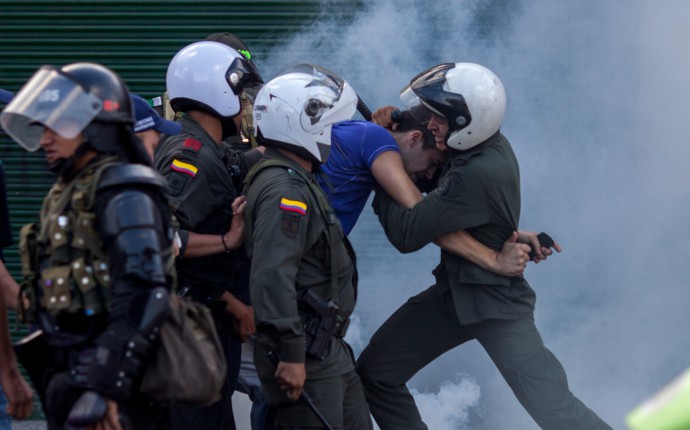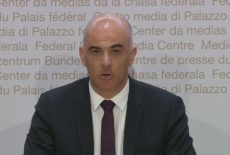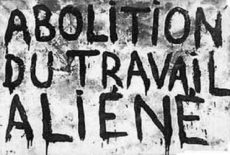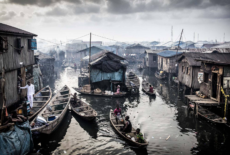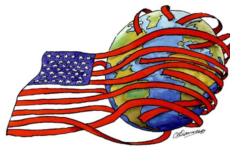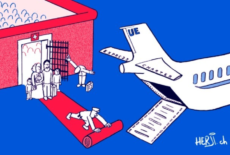Police and Security in Colombia
Academic research on Police Image and Security has been quite extensive with regards to countries in Latin America. Argentina and Chile have been the most prominent countries discussed within most of the literature on this topic. According to Ruíz Vásquez, worldwide research on the image of the police remains unexplored in terms of determinants and reasons for citizen attitudes (Ruíz Vásquez 2013: 400). This research seeks to investigate the impact of corruption on public trust and the performance of the Colombian police along with the effect that the existence of armed groups (including private armies, mafias, insurgent groups, and other forms of organized crime). These determinants, although briefly examined by some Latin American scholars, have remained unexplored terrain when looking at Police image and security in Latin America. This literature review will discuss the most prominent literature complimentary to my research project and will detail the gaps in which my research will address with reference to the Colombian case.
Guillermina Seri makes different sets of claims. Focusing on Argentina since the mid-1990s, she aims at showing the articulation of seguridad as a governmental agenda reorganizing life and the role of the police governance as a dimension of the regime (Seri, 2012: 16). Seri contends that policing needs to be considered in the study of the recurring obstacles to democratization. She uses Argentina for the collection of instruments, comparable influential arguments and concepts, that help to see and focus different facets being examined when looking at police image and the territory of police governance (Seri 2012: 17). Seri also identifies the rationale behind the governance of streets and the people by the police and the specific determinants that lead to the differentiating between categories of human, ranging from ‘the people’ to ‘criminals’ or to the construction of the ‘other’ by the production of fear towards a specific social group in society. Like Seri notes, this distinction equips police agents with the power to define who receives protection and who, on the contrary, becomes defined as a threat and target of state violence (Seri 2012: 18).
In “Fear and Crime in Latin America: Redefining State-Society Relations”, Dammert emphasizes the political game of fear and the construction of fear through media exposure, first-hand experience with crime, and the role that the police plays in the construction of fear in society. Although making specific claims to the Chilean population, she uses the comparative perspective to provide some significant conclusions with respect to the rest of Latin America. Dammert contributes to previous research on the topic by concentrating her research on determinants of trust, such as police effectiveness in fighting crime, the level of fear of crime, the presence of community policing in one’s neighborhood, positive police exposure in the media, and negative contacts and perceptions toward the police. Dammert also expands her research to include possible causes of mistrust or fear towards crime and the police by including gender, socioeconomic status, police use of force, and the effect of victimization and the impact that these variable have on the Chilean population.
Dammert and Seri both make important contributions to the study of Police Image and Security in Latin America. However, their study, limited to Argentina and Chile, does not acknowledge important characteristics that play crucial roles in the Colombian study of the topic. In Colombia, the construction of the ‘criminal’, the internal enemy, and the creation of fear are produced by a particular history of internal conflict. Alike other topics that use Colombia as a case study, one must asses the impact that 60 years of ongoing internal conflict, varying from low to high intensity, has had on Colombian society. Notwithstanding, the creation of the internal enemy is not limited to one ‘other’ in society, but instead to multiple groups that cause a divide in the creation of crime and the provision of security in Colombia. The Colombian state, through its armed forces, and paramilitaries are significant players in the role that the police force has in Colombian society and the extent in which it is capable to maintain its status as an autonomous institution working for the protection of civilians and guaranteeing daily security.
Ruiz Vasquez notes that from its founding in 1891 until nearly 1958, Colombia’s police force was manipulated by Liberal and Conservative party, condemning it to be an instrument of interparty conflict (Vasquez 2012: 43). During the early years of the Colombian conflict, the police force was used to purge opposition or was purged by the opposition and thus it was not able to separate itself from the influence of the armed services. In the 1990s a process of self-determination began with the intent to democratize and create a police force independent of military influence, political parties, and local authorities. Of course this process has been persistently sidetracked due to armed conflict. Police interaction with the drug trafficking market, via cartels, guerillas, or the government itself, has provided a greater impetus for police involvement in criminal activity. Both the influence of armed services and illegal components of the Colombian conflict have resulted in higher levels of corruption within the police force.
Corruption is a primary determinant in the Colombian case. Across the region, citizen trust has been studied through various factors such as age, gender, socioeconomic status, the media, racial differences, and the level of presence of fear of crime like studies by Seri and Dammert show. However, as noted by Vasquez, corruption has been somewhat ignored as a course of distrust among the several determinants of police reputation (Vasquez 2013: 401). Police corruption, as defined by Newburn, is, first, the violation of any law, and second, acts which involve the exploitation or misuse of authority, the gathering of confidential information and occupational knowledge to produce personal or organizational gains (Newburn 1999). With this definition, there is a correlation between police corruption, police confidence, and the image of the police.
In Colombia, police crimes vary from ‘unjust enrichment’, drug trafficking, and bribes. In Colombia, many drug barons have previously been policemen and have an advantage as they have all the confidential information of police operations and monitored trade routes (Vásquez 2013: 406). To this phenomenon, the lack of oversight and impunity can be added to consider the magnitude of corruption that can arise. The only two partially effective mechanisms of control have been the direct authority of the president and the mass media (Vásquez 2013: 414). It is important to acknowledge that since 1993, public confidence in the Colombian police force has risen from 21%-48%, primarily due to the dismantling of the drug cartels through the mid-1990s, the killing of Pablo Escobar by the police force, and the leadership of the police who wisely managed the media and public opinion to instill the idea of the Colombian force being “the best police force in the world” (Llorente 2006, Vásquez 2009). Colombian society has been characterized not only by high levels of violence, but also by the fact that citizens do not turn to the authorities to resolve criminal incidents due to ‘lack of proof’ or ‘fear of reprisals’ (Rubio 1998: 607).
In the Colombian case, although limited research exists, scholars appreciate Colombian historical particularities when assessing police image and security. Violence within armed groups can become an obstacle to the adequate administration of criminal justice. The effective and adequate role of the Colombian National Police within the Colombian society is decreased significant with the presence of guerilla, narco-traffickers, and/or paramilitary groups in the vicinity (Rubio 1998: 607). The presence of two or more groups in a neighborhood has an effect similar to taking a step from a peaceful society to a state of civil war, increasing feelings of insecurity, vulnerability and fear throughout the Colombian population.
The events that the Colombian case study highlights consolidates world-wide research on Police Image and Security by forcing scholars to consider determinants that previous case studies might fail to engage on, such as corruption and the existence of various armed forces within a society. With the current government, under the leadership of president Juan Manuel Santos, moving towards peace talks with the various insurgent groups and a doctrine of peace, Colombia needs a consolidation of a transition process towards a security approach with a true emphasize on prevention, one that casts off the more repressive conception of security. Future scholarly work should look to contribute to the Colombian security transition while also applying its lessons towards policies to improve Police Image and Security in the region, including corruption and the presence of armed groups other than the police as determinants within police performance and governance.
David Romero (UVIC – University of Victoria, Canada)
Sources
– CIVICO, ALDO. « “We Are Illegal, but Not Illegitimate.” Modes of Policing in Medellin, Colombia ». PoLAR: Political and Legal Anthropology Review 35.1 (2012): 77-93.
– DAMMERT, LUCÍA. « Fear and Crime in Latin America: Redefining State-society Relations ». New York: Routledge, 2012.
– GILL, LESLEY. « War and Peace in Colombia ». Social Analysis 52.2 (2008): 131-50.
– GUILLERMINA, SERI. « Seguridad: Crime, Police Power, and Democracy in Argentina ». New York: Continuum, 2012
– MONCADA, EDUARDO. « Counting Bodies: Crime Mapping, Policing and Race in Colombia. » Ethnic and Racial Studies 33.4 (2010): 696-716.
– NIETO, LOPEZ & JAIME, RAFAEL. “Resistencia Civil No Armada en Medellin.” La Voz y La Fuga de Las Comunidades Urbanas (2008): 38-59.
– NIETO, J. Z. « U.S. Security Policies and United States-Colombia Relations. » Latin American Perspectives 34.1 (2007): 112-19.
– RUBIO, MAURICIO. “Violence, Organized Crime, and the Criminal Justice System in Colombia.” Journal of Economic Issues 32.2 (1998): 605-610
– VÁSQUEZ, J.C. RUÍZ. « Community Police in Colombia: An Idle Process. » Policing and Society 22.1 (2012): 43-56.
– VÁSQUEZ, J.C. RUÍZ. « Colombian Police under Fire: Image, Corruption and Controls. » Policing Policing: An International Journal of Police Strategies & Management 36.2 (2013): 399-420.

